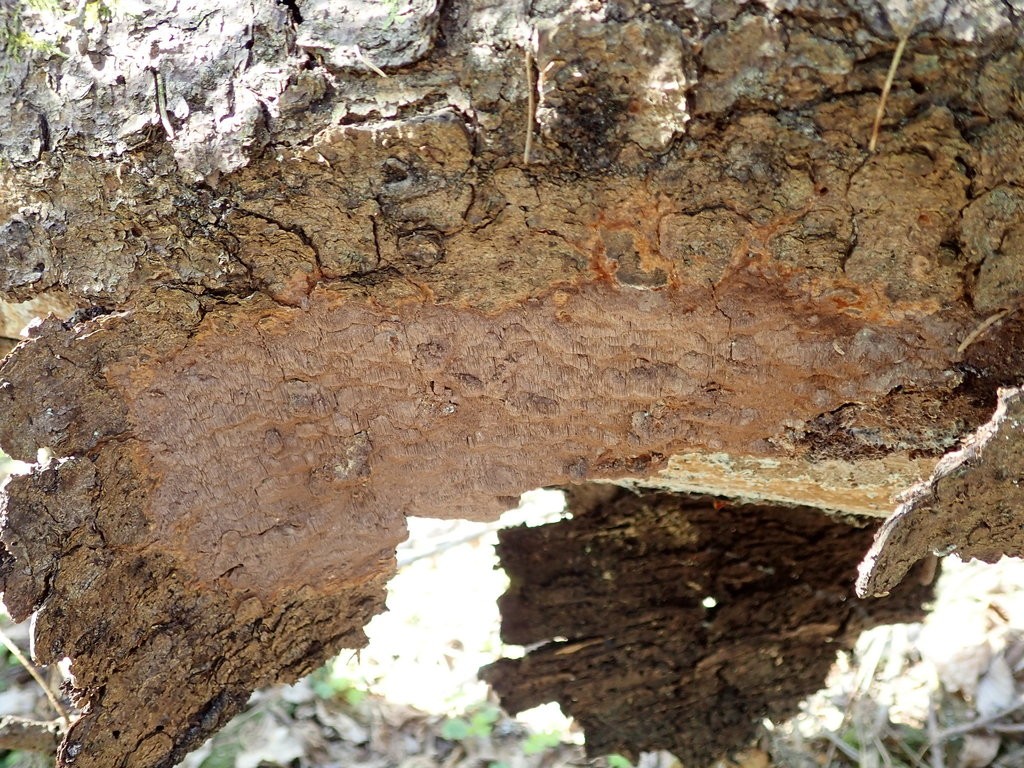Phellinidium
Scientific name: Phellinidium
Phellinidium
Scientific name: Phellinidium
 Photo By Jurga Motiejūnaitė , used under CC-BY-NC /Cropped and compressed from original
Photo By Jurga Motiejūnaitė , used under CC-BY-NC /Cropped and compressed from original Description
Phellinidium are a group of wood-decaying fungi primarily found on coniferous trees. They play a crucial role in forest ecosystems by breaking down tough tree materials, contributing to nutrient cycling. These fungi exhibit a unique ability to create large, perennial fruiting bodies that can persist for years. Some species within this group are known to produce conspicuous, crusty, and often dark-colored structures directly on the bark of trees.
Species of Phellinidium
Scientific Classification
Phylum
Club fungi Class
Mushroom-forming fungi Order
Hymenochaetales Family
Hymenochaetaceae Genus
Phellinidium